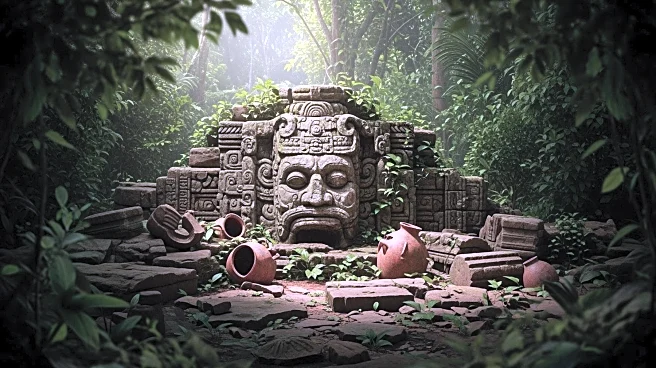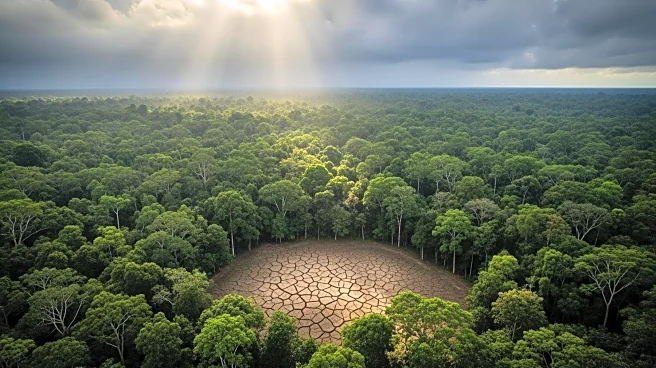What's Happening?
A new study led by UC Santa Barbara archaeologist Douglas Kennett has proposed a comprehensive theory explaining the rise and fall of Classic Maya cities. The research, published in the Proceedings of the National Academy of Sciences, integrates various
factors such as climate downturns, intergroup conflict, and economies of scale in agricultural infrastructure. These elements contributed to the expansion of Maya urban centers and their eventual decline. The study challenges the long-held belief that drought was the primary cause of the Maya collapse, suggesting instead that deurbanization occurred when urban living costs outweighed benefits, as rural areas became more livable due to climate improvements.
Why It's Important?
The findings offer critical insights into the dynamics of urbanization, both historically and in contemporary contexts. By understanding the complex interplay of environmental, social, and economic factors that influenced Maya cities, modern urban planners and policymakers can better manage urban growth and decline. The study highlights the importance of considering multiple factors in urban development, which can inform strategies to address current challenges such as climate change, resource competition, and social inequality. This research underscores the need for sustainable urban planning that balances economic growth with environmental and social considerations.
What's Next?
The study's insights could lead to further research into the application of population ecology theory in modern urban planning. Researchers may explore how these principles can be used to predict urban growth patterns and inform policy decisions. Additionally, the study may prompt a reevaluation of historical urban collapse theories, encouraging scholars to consider multifaceted explanations for other ancient civilizations. The integration of computational modeling in archaeological research could also pave the way for more sophisticated analyses of historical data, offering new perspectives on urban evolution.
Beyond the Headlines
The study's unified model of Maya urban dynamics may have broader implications for understanding human settlement patterns. It suggests that urbanization is not solely driven by economic opportunities but also by complex interactions between environmental conditions and social structures. This perspective could influence how societies approach urban development, emphasizing the need for adaptive strategies that account for changing environmental and social landscapes. The research also highlights the potential for interdisciplinary collaboration in addressing global challenges, as insights from archaeology, ecology, and computational modeling converge to inform sustainable development practices.













